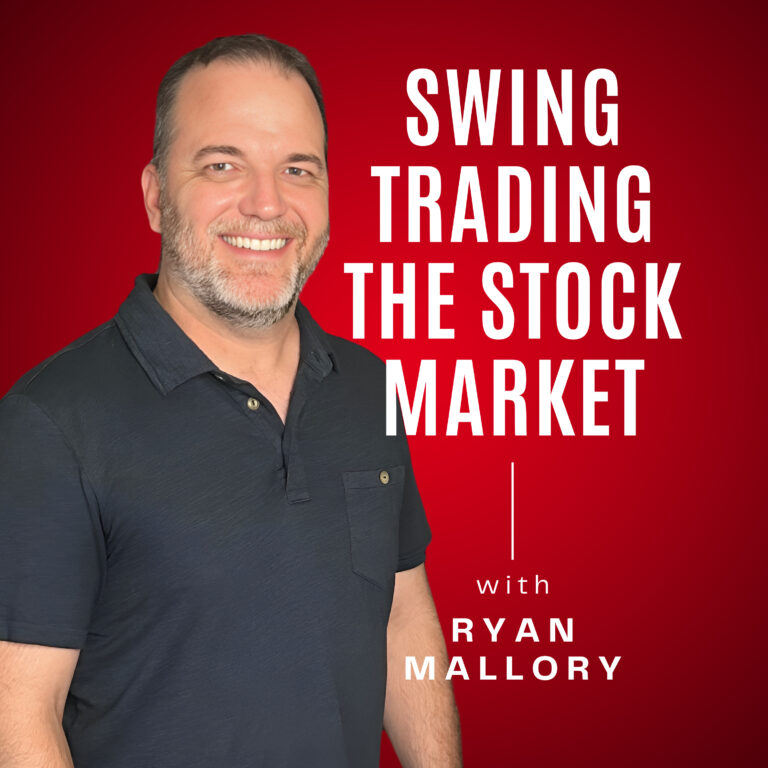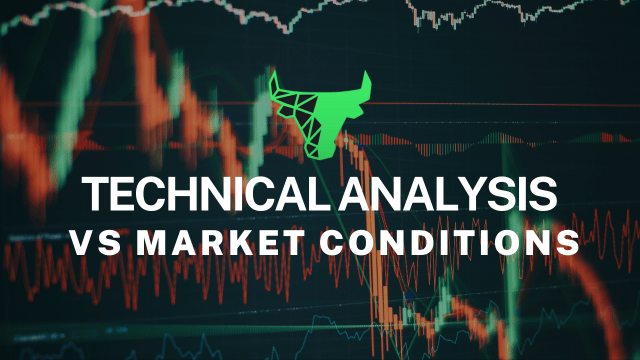I know there are a lot of frustrated swing traders out there.
I know that trading high volatility markets hasn’t been easy for most traders.
I get that.
The headline risk is insane, we are in the winding up earnings season, tariffs are in play, the market has the feel of being on the tail end of one of the greatest bull rallies of all time, over the last 9 years.
You have:
- There’s rising interest rates.
- A new Fed Chairman.
- A very active Twitter Account.
- Rising Dollar
- Mueller’s Special Counsel
- Iran Deal being scrapped.
- War with Syria.
- Cold War II with Russia.
- War with China.
- War among ourselves
There is a lot to digest and I’m not sure anyone can precisely impact how all these events will ultimately play out in the market. But in some ways it feels like we have everything on the table at least. That doesn’t mean you won’t finding yourself continuing trading high volatility markets (otherwise I wouldn’t be writing this post!) but at least we know what we are facing.
So how does that relate to your trading successful in the midst of very volatile markets?
I’ve put together five ways to play high volatility markets
#1: Less is Better while trading high volatility markets
In volatile markets less is always more. Being 100% long or 100% short is dangerous and reckless. If you are trading in margin, JUST STOP – you are setting yourself up for disaster.
Keep the majority of your capital in cash. Yes, if the market goes up 1-2% or more in a day, you may not keep up with the market for that particular move, but you are not trying to. Doing so, means you expose yourself to just as much pain to the downside if you are wrong.
Keeping few positions also helps manage the emotions and keeps them under control. Trust me, you want to feel emotions that you have never felt before, start trading into margin in a market that has volatile and unpredictable price swings, and you’ll find that it is impossible to even keep your breakfast down.
Fewer positions allows for cooler heads to prevail, and that means, over time, you can be more profitable. It allows for you, if on the wrong side of the market, to hold on through some difficult trading days and then benefit from the reversals that go in your favor.
RELATED: 5 Steps to Making Back Your Losses
Too many positions will cause a trader, in a difficult market, to engage in a fire sale of all their positions. If they don’t, they risk getting stopped out of many positions for an even bigger loss. You don’t want that.
Instead, just keep a few, good, quality positions in the portfolio.
#2: Add more stocks, once there are profits on existing positions
This is one of my favorite approaches to a difficult market for trading. I allocate 10% of my capital on each trade.
Let’s say, following a significant sell off, I think that there is a market bounce ready to get underway and I allocate 100% of my capital on that suspicion that the market will bounce.
But instead, the market drops and I take a 3% hit on each position, that means I just took a 3% loss to the portfolio.
That’s no good!

Instead, I stair-step my positions. I might start off with a couple of positions. If I am wrong and I take a 3% loss on each one, then I lose 0.6% of my capital. That is much easier to digest than a whole 3% on ten positions at 100% vested.
Once I have 1-2% of profits in a position, I’ll add another position. That makes it to where, while I’m increasing my market exposure, I am adding positions once existing positions are profitable, and that makes it to where I am managing the drawdown risk, and downside exposure should the market turn against me.
If I am wrong, my existing profitable positions will still be profitable, despite what the market does, because I…
#3: Raise stops aggressively to protect existing profits
That’s right, it is the same old thing I always do in any market that I am trading in – I protect profits. I never know when a market is going to go bad on me, but what I do know, is that when it happens, my profits won’t be a victim of circumstances. I keep my profits protected by raising the stop-loss as quickly as I can.
RELATED: 4 Reasons Why It Is Good To Get Stopped Out Of A Trade
That doesn’t mean I raise them a few pennies below the current price, instead I raise them to just below key, short-term price levels that, if breached, will let me know I need to take my profits and leave.
I never expect to get in on a stock at the bottom or out at the very top. What I want is the lion’s share of the profits. I always give it enough room to run higher, if it so chooses, so that does require sacrificing some profits, but never all of them. As a rule of thumb, I try to give my trades about 2-3% in breathing room between where the price is currently trading at, and where I place my stop-loss.
Some ideas for stop-loss placement for trading high volatility markets:
- Below the 5 or 10-day moving average
- Below Price level support (or above resistance if shorting)
- If nearby by, use a longer-term MA, like the 50 or 200-day moving average.
- If a key price level is broken on SPX, consider a market order on the existing position.
- A rising trend-line on the chart.
#4: Don’t get overexposed in one sector
There’s a lot to say here, but I’ll keep it brief and to the point: Don’t put all your eggs in one basket. Just because one sector is trading higher on one particular day, doesn’t mean that the sector will be trading higher, every day, thereafter.
As a result, you want your risk spread out. That doesn’t mean you have positions in every sector, but you it does mean you have a 4 to 5 sectors that you are focused on – and they need to be the sectors that are the strongest overall in the market. There are times that the market can be rallying higher, but a sector, like the financials, can be trading marginally higher, or actually selling off because one of the larger banks fails to beat expectations or language from the Federal Reserve suggests lower interest rates. As a result, you can find yourself on the sidelines watching the market rally while you have nothing to show for it.
It is critical to have positions in more than just one sector, and while it is okay to be overweight in one sector over another, you don’t want to be completely sold out to that one particular sector.
#5: Focus on super-large caps and lower beta stocks
When the market is in the midst of a massive sell-off, the volatility is high. Sell-offs in excess of 3-4% isn’t unusual or unexpected. It is also worth pointing out that during these times of high volatility, buying or shorting extremely speculative names is ill-advised.
What a 3% sell-off is to the overall market, can be more than 10% in a speculative small-cap stock.
That is why when I trade during these high volatility markets, I do so with large cap stocks, like Apple (AAPL), Amazon (AMZN) or Alphabet (GOOGL). I don’t need stocks with a high beta to make money, and if the market is going to bounce off of a key support level or finally emerge out of its basing pattern, it is going to need the larger cap companies to rally as well for anything to be sustainable.
This also helps make managing risk a lot easier. Because odds are, you won’t catch the market right at the bottom, and once the market does start to rally, and it becomes obvious in doing so, finding ideal stops will quickly become a problem for traders on new positions that you might eventually take on. So you are going to target the stocks that are the “Super Large-Caps” and that means looking for stocks that have a market cap of $80 billion or more, because finding ideal trade setups will be much easier with them.
In doing so, the market will be bouncing hard, and these stocks will likely be matching or beating the overall returns of the market. That is because, when the market does bounce, investors and funds in general will be looking for the stocks at a rare discount, and snatching them up as quickly as possible. This is the time you want to be owning these large caps.
Bringing it together and trading high volatility markets successfully
As traders it is important to understand the conditions of the overall market and how you should be appropriately trading it. Strategies and one’s approach to trading has to change as the market changes. You have to adapt and create new edges for yourself.
There are no easy shortcuts. It takes work and plenty of it. You have to always be re-evaluating your approach and whether it is suitable for the market you are trading in.
In doing so, it requires that you know how to find the right stocks and when to trade them.
I’d like to encourage you to try the Swing-Trading Trading Block where I manage my portfolio live and for all traders to see. For each trade I make, I provide members with my entry price, stop-loss, target and the “why” of the trade. Each trade gets sent out via Discord and email alert.
The best part is, you get to try it out for FREE with a 7-Day Trial. So sign up today, and let’s start trading together in the SharePlanner Trading Block!

Welcome to Swing Trading the Stock Market Podcast!
I want you to become a better trader, and you know what? You absolutely can!
Commit these three rules to memory and to your trading:
#1: Manage the RISK ALWAYS!
#2: Keep the Losses Small
#3: Do #1 & #2 and the profits will take care of themselves.
That’s right, successful swing-trading is about managing the risk, and with Swing Trading the Stock Market podcast, I encourage you to email me (ryan@shareplanner.com) your questions, and there’s a good chance I’ll make a future podcast out of your stock market related question.
In today's episode, Ryan answers the questions of one listener ranging from his transition from paper trading to live trading, and swing trading to day trading. Also addressed is his approach to trading, specifically Fibonacci retracement levels and why Ryan prefers Pivot Points instead.
Be sure to check out my Swing-Trading offering through SharePlanner that goes hand-in-hand with my podcast, offering all of the research, charts and technical analysis on the stock market and individual stocks, not to mention my personal watch-lists, reviews and regular updates on the most popular stocks, including the all-important big tech stocks. Check it out now at: https://www.shareplanner.com/premium-plans
📈 START SWING-TRADING WITH ME! 📈
Click here to subscribe: https://shareplanner.com/tradingblock
— — — — — — — — —
💻 STOCK MARKET TRAINING COURSES 💻
Click here for all of my training courses: https://www.shareplanner.com/trading-academy
– The A-Z of the Self-Made Trader –https://www.shareplanner.com/the-a-z-of-the-self-made-trader
– The Winning Watch-List — https://www.shareplanner.com/winning-watchlist
– Patterns to Profits — https://www.shareplanner.com/patterns-to-profits
– Get 1-on-1 Coaching — https://www.shareplanner.com/coaching
— — — — — — — — —
❤️ SUBSCRIBE TO MY YOUTUBE CHANNEL 📺
Click here to subscribe: https://www.youtube.com/shareplanner?sub_confirmation=1
🎧 LISTEN TO MY PODCAST 🎵
Click here to listen to my podcast: https://open.spotify.com/show/5Nn7MhTB9HJSyQ0C6bMKXI
— — — — — — — — —
💰 FREE RESOURCES 💰
My Website: https://shareplanner.com
— — — — — — — — —
🛠 TOOLS OF THE TRADE 🛠
Software I use (TC2000): https://bit.ly/2HBdnBm
— — — — — — — — —
📱 FOLLOW SHAREPLANNER ON SOCIAL MEDIA 📱
X: https://x.com/shareplanner
INSTAGRAM: https://instagram.com/shareplanner
FACEBOOK: https://facebook.com/shareplanner
STOCKTWITS: https://stocktwits.com/shareplanner
TikTok: https://tiktok.com/@shareplanner
*Disclaimer: Ryan Mallory is not a financial adviser and this podcast is for entertainment purposes only. Consult your financial adviser before making any decisions.





